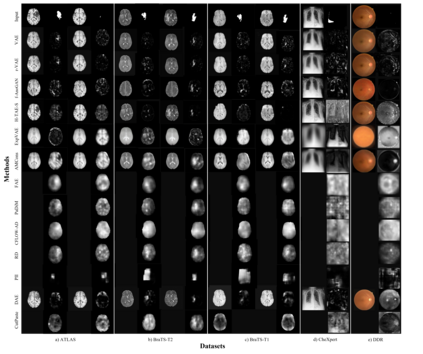Deep unsupervised approaches are gathering increased attention for applications such as pathology detection and segmentation in medical images since they promise to alleviate the need for large labeled datasets and are more generalizable than their supervised counterparts in detecting any kind of rare pathology. As the Unsupervised Anomaly Detection (UAD) literature continuously grows and new paradigms emerge, it is vital to continuously evaluate and benchmark new methods in a common framework, in order to reassess the state-of-the-art (SOTA) and identify promising research directions. To this end, we evaluate a diverse selection of cutting-edge UAD methods on multiple medical datasets, comparing them against the established SOTA in UAD for brain MRI. Our experiments demonstrate that newly developed feature-modeling methods from the industrial and medical literature achieve increased performance compared to previous work and set the new SOTA in a variety of modalities and datasets. Additionally, we show that such methods are capable of benefiting from recently developed self-supervised pre-training algorithms, further increasing their performance. Finally, we perform a series of experiments in order to gain further insights into some unique characteristics of selected models and datasets. Our code can be found under https://github.com/iolag/UPD_study/.
翻译:深入而不受监督的方法正在对医疗图像中的病理检测和分解等应用日益引起更多的注意,因为它们承诺减轻对大标签数据集的需求,并且比监督的同行更普遍地发现任何种类的罕见病理。随着无人监督的异常检测(UAD)文献的不断增长和新的范式的出现,至关重要的是在一个共同框架内不断评估和基准采用新方法,以便重新评估最新技术(SOTA),并确定有希望的研究方向。为此,我们评估了多种医学数据集方面最先进的UAD方法的多种选择,将其与UAD中已经建立的SOTA进行对比。我们的实验表明,工业和医学文献中新开发的特征建模方法与以前的工作相比提高了绩效,并将新的SOTA设置为各种模式和数据集。此外,我们表明,这些方法能够受益于最近开发的自我监控前算法,进一步提高其性能。最后,我们进行了一系列实验,以深入了解所选模式和数据集的一些独特特性。我们可以在 MAGUB/UPD中找到的代码。</s>









